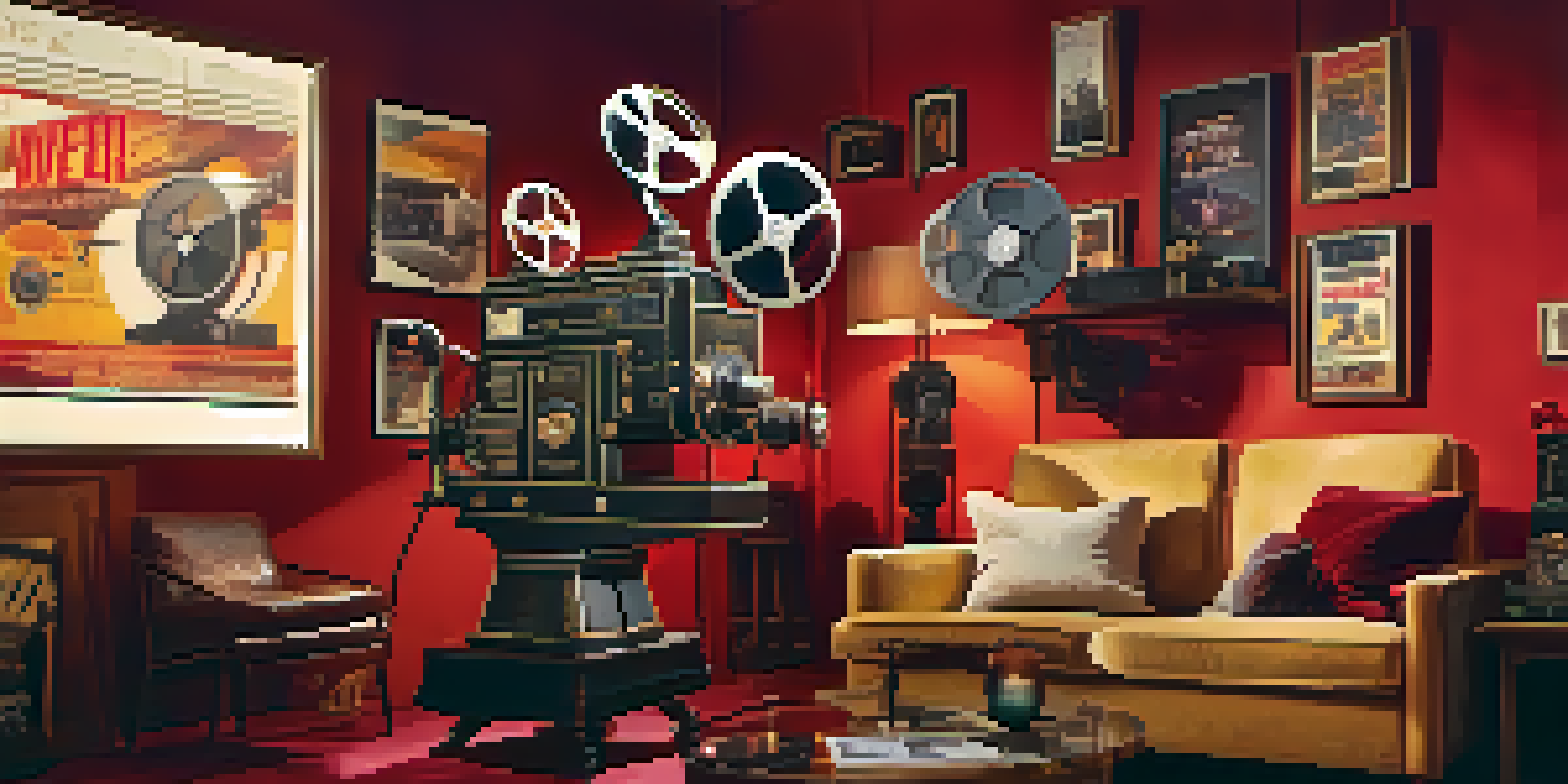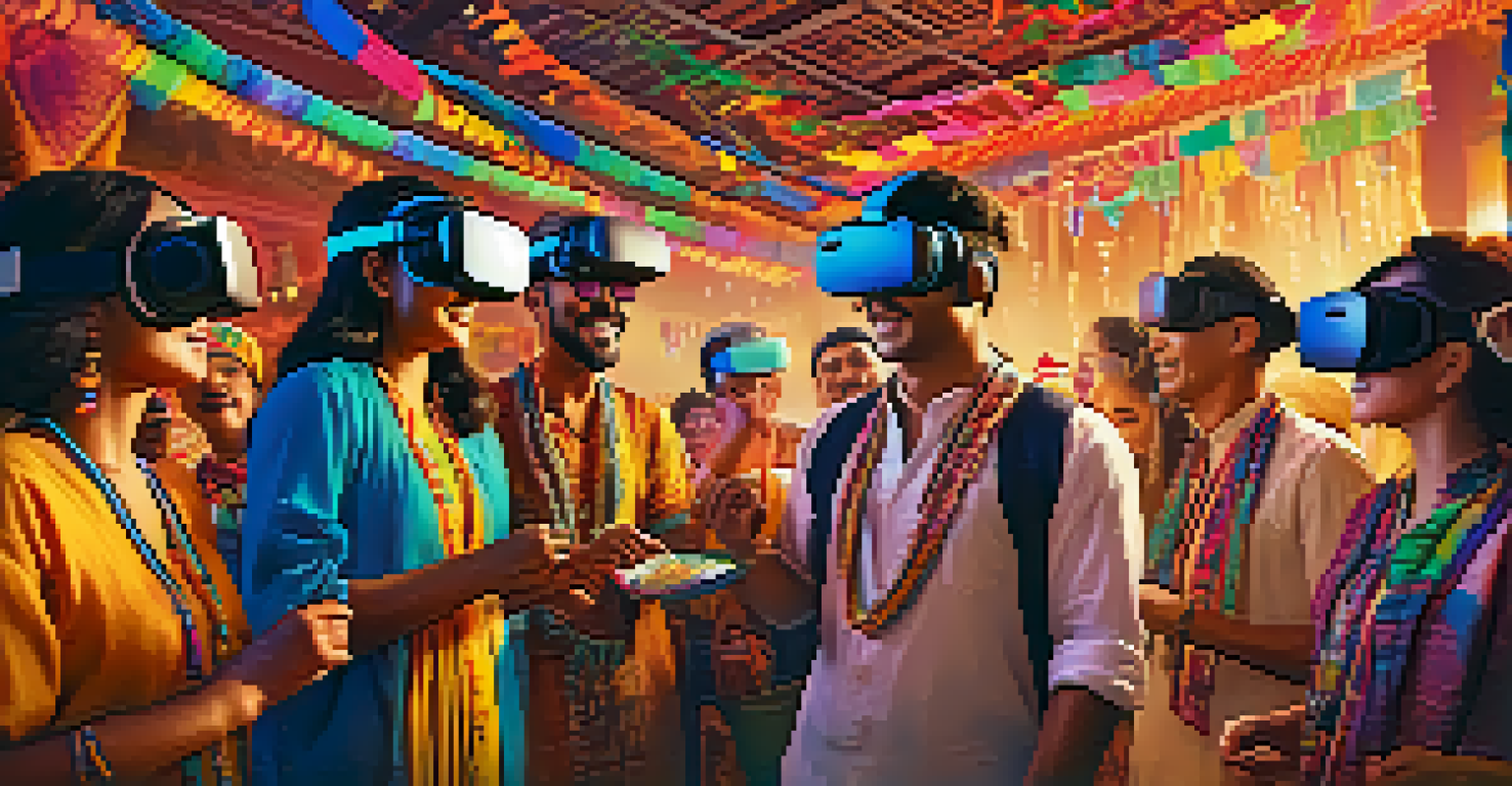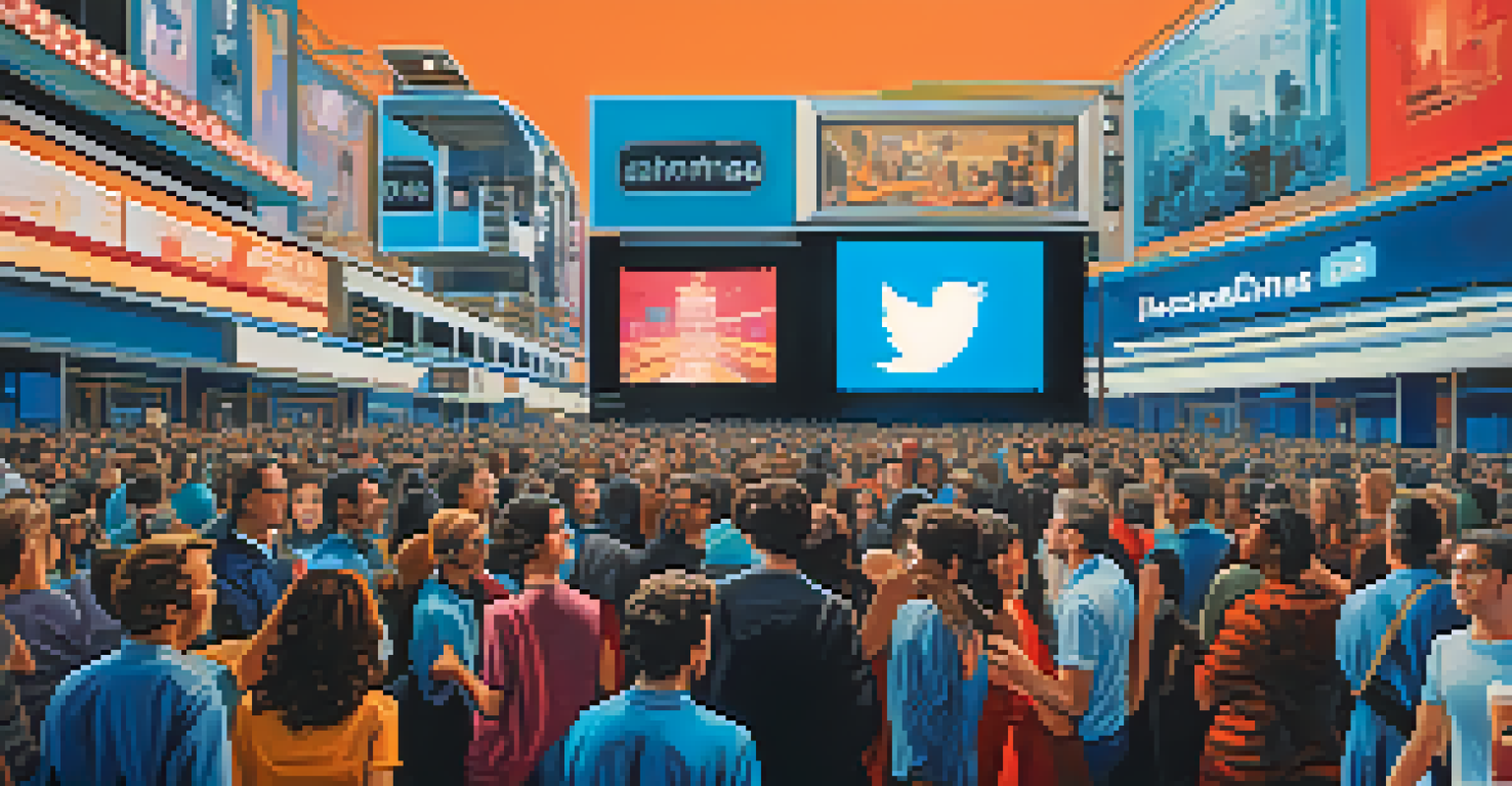The Intersection of Technology and Culture in Hollywood Cinema

The Evolution of Film Technology and Storytelling
Film technology has dramatically evolved since the early days of cinema. From silent films to the introduction of sound and color, each technological advancement has reshaped storytelling techniques. For instance, the advent of CGI has allowed filmmakers to create visually stunning worlds that were previously unimaginable.
Cinema is a matter of what's in the frame and what's out. It’s a reflection of society and it can help us understand our own culture better.
These innovations not only enhance the visual experience but also redefine narrative possibilities. Directors can now craft intricate stories that blend reality with fantasy, engaging audiences in new ways. The 1999 film 'The Matrix' exemplifies this shift, utilizing groundbreaking effects to explore complex themes.
As technology continues to advance, it opens up more avenues for creativity. Filmmakers are constantly pushing boundaries, leading to unique storytelling experiences that reflect contemporary culture and societal issues.
Cultural Representation Through Technological Advances
With the rise of new technologies, Hollywood has begun to address cultural representation more thoughtfully. Filmmaking tools like virtual reality and augmented reality can help tell diverse stories that resonate with wider audiences. These technologies create immersive experiences that allow viewers to step into different cultural narratives.

For example, the animated film 'Moana' showcases Polynesian culture through rich visuals and storytelling, supported by advancements in animation technology. This not only entertains but educates audiences about different cultures, fostering understanding and empathy.
Tech Enhances Storytelling Dynamics
Advancements in film technology, like CGI and VR, have transformed storytelling, allowing for richer narratives that blend reality and fantasy.
As technology democratizes content creation, more voices from diverse backgrounds can share their stories. This shift is crucial for creating a more inclusive Hollywood that reflects the multicultural fabric of contemporary society.
Social Media's Role in Shaping Cultural Conversations
Social media platforms have become powerful tools for shaping cultural conversations in Hollywood. They allow filmmakers to engage directly with audiences, creating buzz around films and their themes. Hashtags and viral trends can elevate discussions about representation, diversity, and social issues portrayed in movies.
The beauty of cinema is that it can transport you into another world, and technology is simply a tool to enhance that experience.
Take the success of the #OscarsSoWhite movement, for instance. It sparked widespread debate about racial representation in the film industry, leading to tangible changes in how Hollywood approaches diversity in casting and storytelling. Social media has amplified these voices, making cultural critiques more visible.
As audiences become more vocal about their preferences, filmmakers are encouraged to respond. This dynamic interaction between technology and culture is reshaping the way stories are told and whose stories get told.
Streaming Services and Access to Diverse Narratives
The rise of streaming services has revolutionized how we consume cinema, breaking down barriers to access. Platforms like Netflix and Hulu offer a vast array of films from different cultures and genres, often giving a voice to underrepresented filmmakers. This shift allows audiences to explore narratives that they may not have encountered in traditional cinema.
For example, films like 'Roma' and 'Parasite' gained international acclaim through streaming, showcasing unique cultural perspectives. These films challenge mainstream narratives and encourage viewers to appreciate global storytelling.
Diversity Grows with Streaming Access
Streaming services provide a platform for diverse narratives, enabling underrepresented filmmakers to reach wider audiences and challenge mainstream stories.
Streaming services have also changed the way films are marketed and distributed, making it easier for indie filmmakers to reach wider audiences. This democratization of film distribution enhances cultural diversity in Hollywood, reflecting a broader spectrum of human experiences.
The Impact of AI on Filmmaking and Cultural Themes
Artificial Intelligence (AI) is making waves in Hollywood, influencing everything from scriptwriting to visual effects. AI algorithms can analyze audience preferences, helping filmmakers craft stories that resonate well with their target demographics. This technology could lead to more tailored content that reflects current cultural trends.
Moreover, AI-generated content is beginning to emerge, raising questions about authenticity and creativity in storytelling. While it can enhance efficiency, there is a fine line between innovation and losing the human touch that brings depth to narratives.
As AI continues to evolve, it will be interesting to see how it affects the themes explored in films. Will it promote a homogenized culture, or will it spark new ideas that challenge societal norms? The answers to these questions will shape the future of Hollywood filmmaking.
Virtual Reality: A New Frontier for Cultural Engagement
Virtual reality (VR) is emerging as a groundbreaking tool for cultural engagement in cinema. It offers audiences an immersive experience, allowing them to step into the story and interact with the characters and settings. This level of engagement can lead to a deeper understanding of diverse cultures and experiences.
For instance, VR experiences like 'The Invisible Man' allow users to explore narratives from a first-person perspective, heightening emotional connections to the story. Such innovations encourage filmmakers to experiment with how they present cultural themes and social issues.
AI Shapes Film Content and Themes
Artificial Intelligence is influencing filmmaking processes and audience engagement, raising important questions about creativity and authenticity in storytelling.
As VR technology becomes more mainstream, it has the potential to transform the way stories are told and experienced. This new frontier invites audiences to not only watch but also participate in the cultural narratives being presented.
The Future of Hollywood: Balancing Technology and Culture
Looking ahead, the intersection of technology and culture in Hollywood presents both opportunities and challenges. While advancements can enhance storytelling and cultural representation, there is a risk of prioritizing technology over authentic narratives. It’s crucial for filmmakers to strike a balance that honors the stories being told.
As audiences demand more diverse and meaningful content, filmmakers must remain vigilant about how technology is utilized. Embracing innovation while preserving the essence of storytelling is key to creating films that resonate across cultures.

Ultimately, the future of Hollywood lies in its ability to adapt to technological advancements while staying true to the cultural narratives that define our shared human experience. This delicate balance will shape the cinematic landscape for years to come.